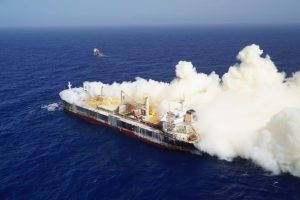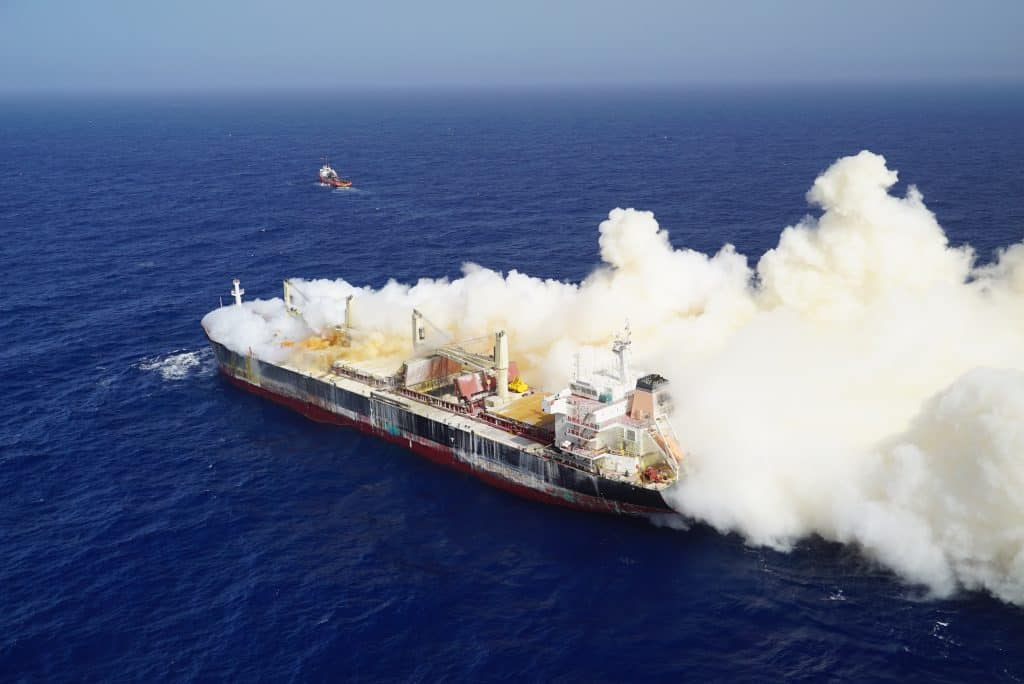Types of Emergencies for Ships: An Overview
Ships, whether they are commercial, passenger, or recreational, operate in an environment that is inherently hazardous. The vast oceans and seas present unique challenges, and despite advances in technology and safety protocols, the risk of emergencies at sea remains significant. This article explores the different types of emergencies that can occur on ships, providing a broad overview that applies to various types of vessels.

1. Fire and Explosion
One of the most dangerous emergencies on a ship is a fire or explosion. Fires can occur in the engine room, cargo holds, or living quarters, often due to fuel leaks, electrical malfunctions, or mishandling of flammable materials. Explosions may follow fires, especially if the fire reaches fuel tanks or explosive cargo.
Key Factors:
- Engine Room Fires: Often caused by oil leaks, electrical faults, or overheating machinery.
- Cargo Hold Fires: Particularly hazardous on ships carrying flammable or hazardous cargo.
- Living Quarters Fires: Usually due to electrical faults or improper use of heating appliances.
Response Measures:
- Immediate activation of fire suppression systems.
- Sealing affected compartments to starve the fire of oxygen.
- Evacuation of non-essential personnel to safe zones.
2. Collisions and Groundings
Collisions between ships or with stationary objects like icebergs, buoys, or port infrastructure can lead to severe damage. Grounding, where a ship runs aground on a sandbank, reef, or shallow area, is another common emergency that can breach the hull and lead to flooding.
Key Factors:
- Navigational Errors: Often caused by human error, poor visibility, or equipment failure.
- Environmental Conditions: Fog, storms, and strong currents can increase the risk.
- Traffic Density: High-traffic areas like shipping lanes or port entrances are more prone to collisions.
Response Measures:
- Immediate assessment of damage and potential flooding.
- Use of pumps to manage water ingress.
- Deployment of emergency anchoring systems to stabilize the vessel.
3. Flooding and Water Ingress
Flooding can occur due to hull damage from collisions, groundings, or rough weather. It can also happen internally due to burst pipes or faulty valves. Uncontrolled flooding can lead to loss of stability and, in extreme cases, the sinking of the ship.
Key Factors:
- Hull Breach: Often the result of collision, grounding, or structural failure.
- Internal Leaks: Faulty plumbing or ballast systems can lead to significant water ingress.
- Weather Conditions: Heavy seas can cause structural damage and lead to flooding.
Response Measures:
- Activation of watertight compartments to limit water spread.
- Use of pumps to remove water.
- Emergency repair efforts to patch the breach.
4. Mechanical Failure
Ships rely on complex machinery for propulsion, power generation, and essential operations. Mechanical failures can lead to a loss of propulsion, steering, or electrical power, leaving the ship adrift or unable to navigate safely.
Key Factors:
- Engine Failure: Can be caused by fuel contamination, overheating, or mechanical breakdown.
- Steering Gear Failure: Loss of steering control, often due to hydraulic or mechanical issues.
- Electrical Failure: A failure in the ship’s power generation system can knock out essential systems.
Response Measures:
- Switching to backup systems or emergency generators.
- Manual control of steering if automated systems fail.
- Emergency repairs to restore functionality.
5. Man Overboard (MOB)
A Man Overboard (MOB) situation occurs when a person falls off the ship. The primary concerns are the individual’s safety, as they may be at risk of drowning, hypothermia, or injury.
Key Factors:
- Rough Seas: Increased likelihood of MOB incidents.
- Inadequate Safety Measures: Lack of proper railings or safety lines.
- Human Factors: Accidents during work or recreational activities.
Response Measures:
- Immediate notification and a man overboard alarm.
- Deployment of lifebuoys and a rescue boat.
- Turning the ship around to assist in the rescue operation.
6. Piracy and Armed Robbery
In some parts of the world, particularly off the coast of Africa and Southeast Asia, piracy and armed robbery are significant threats. Pirates may board a ship to steal cargo, kidnap crew members for ransom, or take control of the vessel.
Key Factors:
- High-Risk Areas: Certain maritime regions are more prone to pirate attacks.
- Inadequate Security Measures: Lack of onboard security or failure to follow Best Management Practices (BMP).
- Vessel Vulnerability: Slow-moving or low-freeboard ships are easier targets.
Response Measures:
- Increased vigilance and lookouts in high-risk areas.
- Implementation of anti-piracy measures such as citadels and water cannons.
- Coordination with naval forces and security escorts in high-risk areas.
7. Medical Emergencies
Medical emergencies can occur due to accidents, illness, or the exacerbation of pre-existing conditions. Given the remote locations where ships often operate, access to medical care can be limited.
Key Factors:
- Accidents: Slips, falls, and machinery-related injuries.
- Illness: Outbreaks of contagious diseases or chronic condition flare-ups.
- Lack of Medical Facilities: Limited onboard medical resources.
Response Measures:
- Onboard first aid and medical treatment.
- Evacuation by helicopter or speedboat if necessary.
- Telemedicine support to provide guidance from shore-based doctors.
8. Pollution Incidents
Pollution incidents, such as oil spills or the release of hazardous materials, can have devastating environmental impacts. These emergencies often occur due to accidents, mechanical failures, or improper handling of cargo.
Key Factors:
- Oil Spills: Can result from hull breaches in tankers or oil transfer operations.
- Chemical Spills: Hazardous materials may leak due to container damage or poor handling.
- Ballast Water Discharge: Can introduce invasive species to new environments.
Response Measures:
- Activation of oil spill containment and recovery systems.
- Notification of relevant authorities for coordinated response efforts.
- Implementation of pollution control measures as per international conventions.
9. Severe Weather and Natural Disasters
Ships are vulnerable to severe weather conditions such as hurricanes, typhoons, and tsunamis. These natural disasters can cause structural damage, loss of stability, and pose serious risks to the safety of the ship and its crew.
Key Factors:
- Storms: High winds and waves can overwhelm a vessel, leading to capsizing or structural damage.
- Ice Accretion: In cold climates, ice buildup can affect a ship’s stability and functionality.
- Tsunamis: Rare but highly destructive, tsunamis can strike with little warning.
Response Measures:
- Avoidance through weather forecasting and route planning.
- Securing cargo and equipment to prevent loss or damage.
- Emergency maneuvers to minimize the impact of rough seas.
The maritime environment presents numerous challenges and potential emergencies that can jeopardize the safety of ships, their crews, and the environment. Understanding these types of emergencies and the appropriate response measures is crucial for maintaining safety at sea. Proper training, adherence to international regulations, and the use of advanced technology can help mitigate the risks and ensure that ships navigate the world’s waters safely.


Hey, Jack here. I’m hooked on your website’s content – it’s informative, engaging, and always up-to-date. Thanks for setting the bar high!
The writing is a masterpiece. You managed to cover every aspect with such finesse.